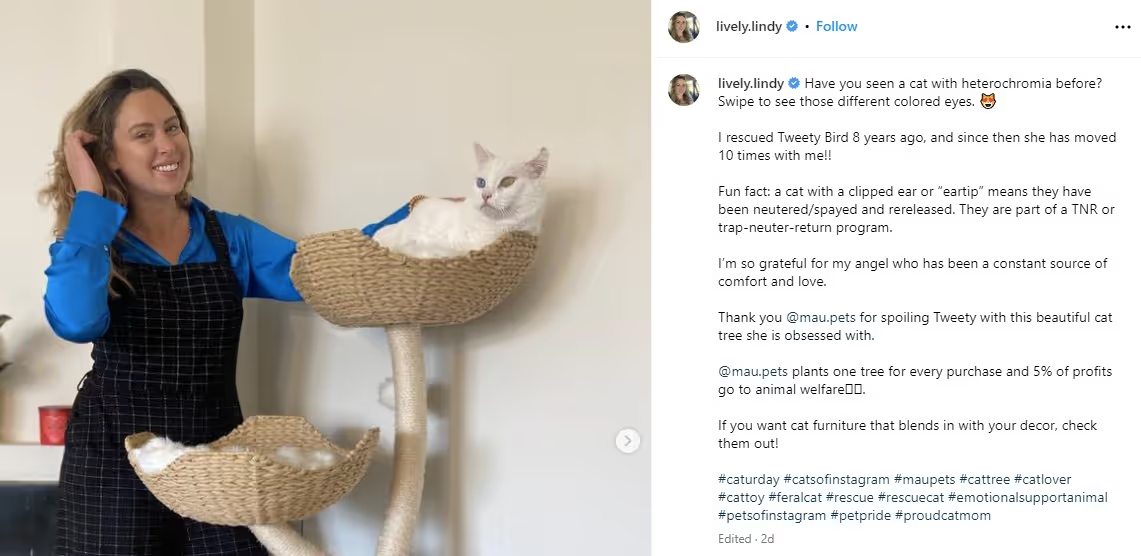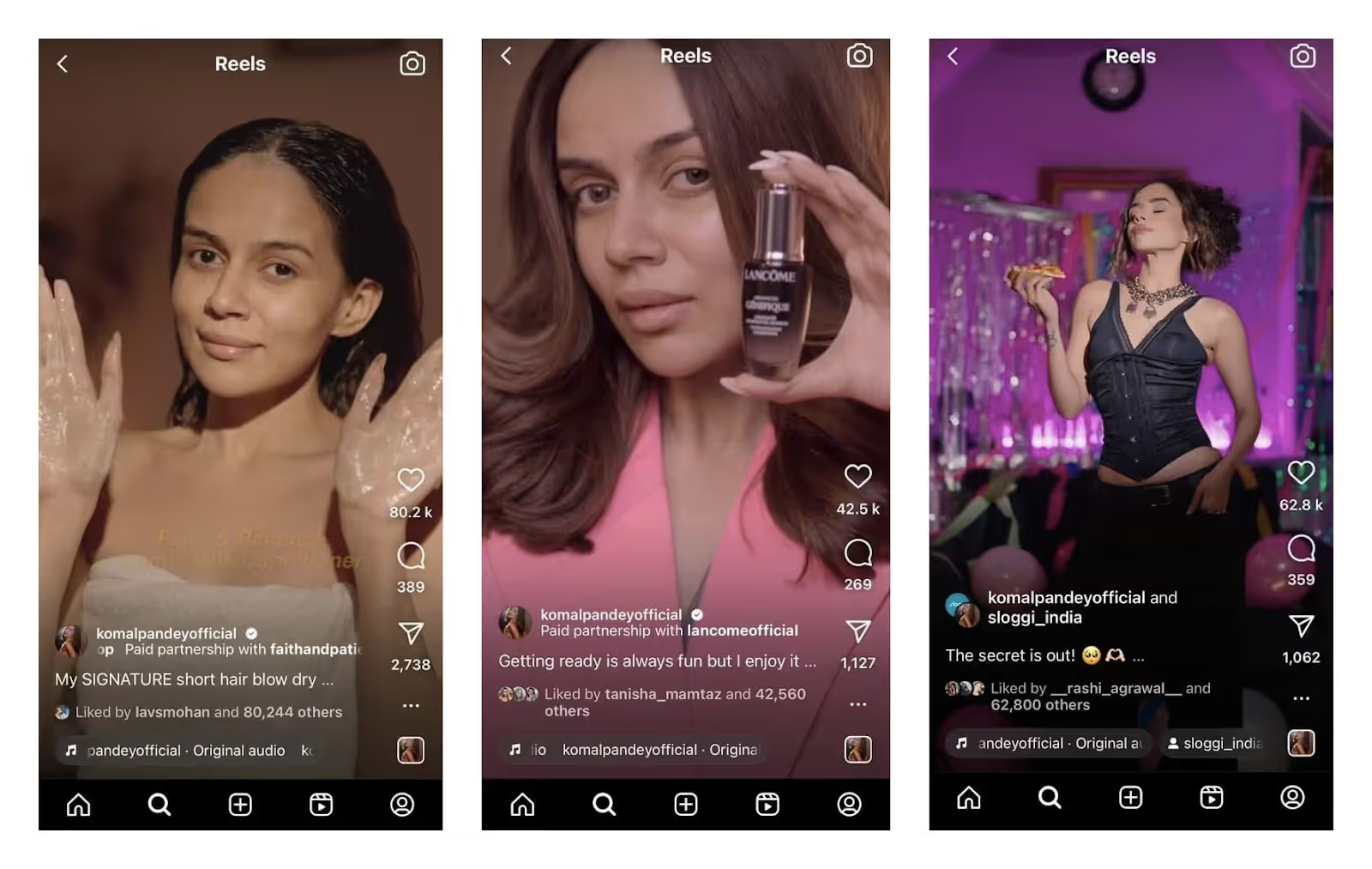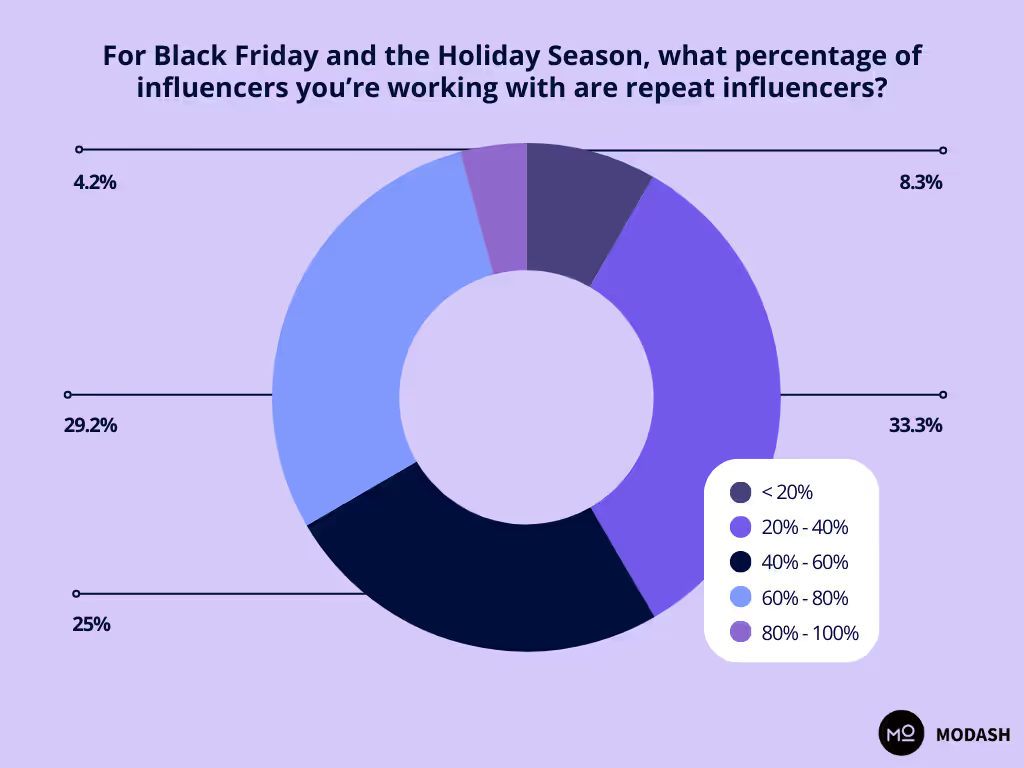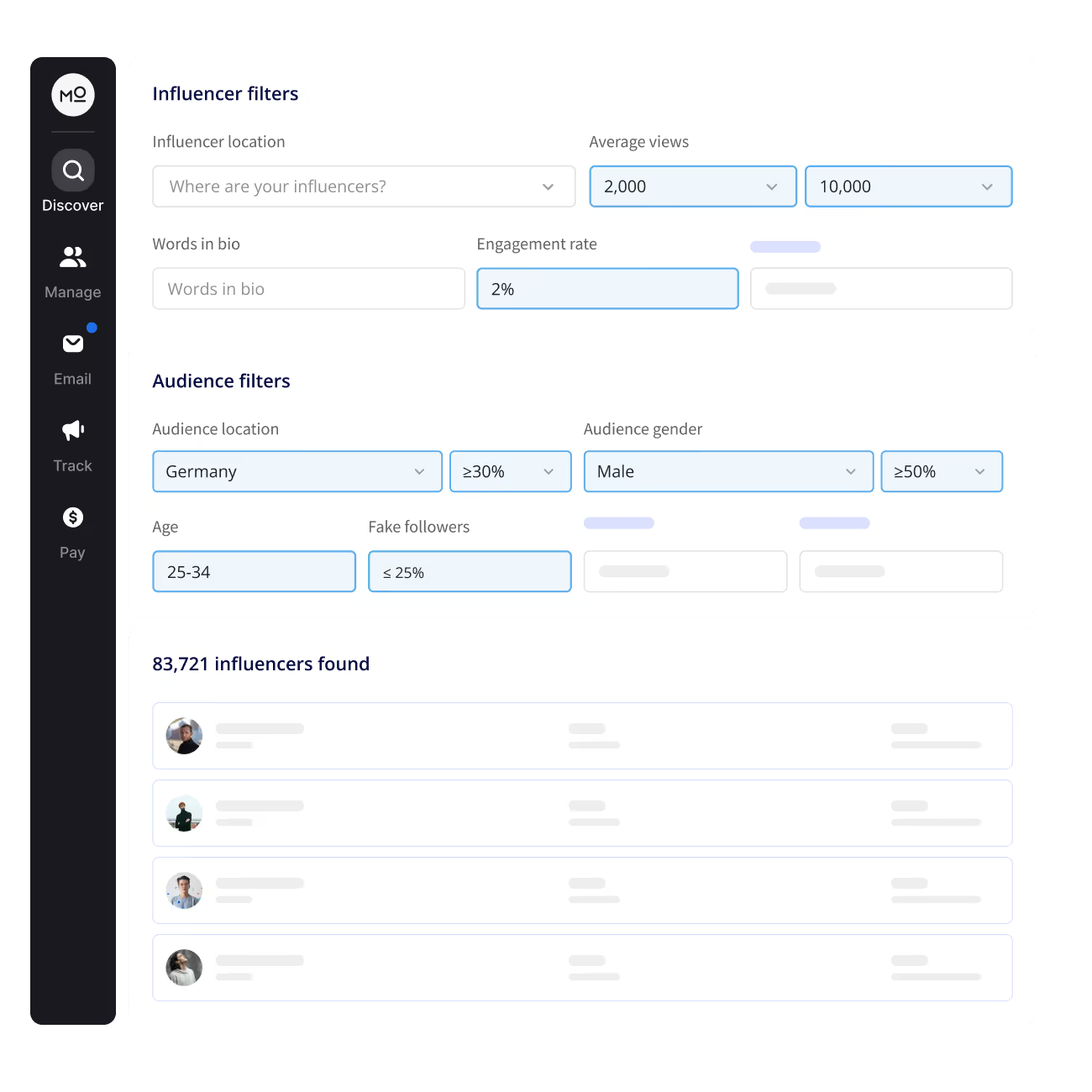Long-term influencer partnerships are better than short-term ones. Discuss.
Typically, we're told in influencer marketing that long-term is always best. Let's challenge the status quo to see if it holds up.
Aaron Helisek at Creators Entertainment Group got $160K in sales after three Instagram Story slides in the first creator collaboration. His experience is: if the influencer creates fantastic content and they know how to sell, most sales will come from their first post.
What if Aaron is onto something? Should marketers optimize for running lots of first-time collabs? Or, as with most things in the world of influencer marketing, is the situation more nuanced than it first seems?
Let’s explore! 👇
TLDR: Not “long-term” or “short-term” but a secret third thing
In reality, it’s not a straight choice between long- and short-term influencer partnerships, because they have different strengths and weaknesses (more on this in the next section…).
And then you’ve got affiliate partnerships, which are a whole other collaboration type, while also overlapping with both long- and short-term collabs.
As such, for most brands, the smart play is to develop a diversified influencer marketing program combining all three collaboration types.
Long-term vs. short-term partnerships at a glance
Okay, so we know there are different use cases for short- and long-term influencer collaborations. We’ll take a closer look at them in this section – but first, let’s deal with some definitions:
👉 Short-term collaborations: One-off partnerships or collaborations involving a specific campaign.
👉 Long-term collaborations: Always-on partnerships or multi-campaign deals.
Now let’s take a more in-depth look at how short- and long-term collabs stack up:
⚖️ Stability and predictability: Short-term influencer partnerships can be wobbly as you have to find new creators for each campaign, so it’s impossible to predict your results. Long-term collaborations give you solid ground to stand on, and you can predict your results a little easier.
🧪 Experimentation capabilities: Short-term relationships give more room for experimentation, whereas long-term collabs tend to fall into a more consistent pattern based on what works.
✍️ Commitment: Short-term influencer relationships require less commitment since you aren’t signing a long contract. Long-term collaborations need a substantial commitment – and you might end up stuck with an influencer who stops performing well, or whose audience becomes less engaged over time.
👥 Audience: With short-term collaborations, you’re more likely to work with a higher volume of influencers – which can (potentially) help you reach a wider audience. On the flip side, long-term influencer partnerships ensure that the same audiences see your messaging repeatedly, which hopefully makes it more persuasive.
🤝 Authenticity: Short-term collaborations might be viewed as salesy by the audience, who may assume they’re just partnering with your brand to make a quick buck. By contrast, long-term collabs are more likely to be seen as authentic because the audience sees your product become an essential part of the influencer’s life.
But what about the third collaboration type, affiliate partnerships?
As I’ve already noted, affiliate collabs – where influencers earn a commission for generating direct product sales – fall somewhere between short- and long-term partnerships.
They’re less stable and predictable than long-term partnerships, and require minimal commitment. They offer a ton of scope for experimentation and reaching new audiences – but they can sometimes feel a touch inauthentic.
Per Modash research, two-thirds of influencer marketers believe influencers are becoming more open to affiliate deals:

Because these collaborations are performance-based, they’re often seen as a short-term, low-risk way to drive quick sales. But Bakhtawar Shahzaib argues that the growing popularity of affiliate deals could end up fueling more long-term influencer relationships.
It’s also worth noting that affiliate deals aren’t always a standalone collaboration type.
Increasingly, brands are using hybrid payment structures combining cash payments with performance-based rewards. Anna Klappenbach explains that this approach can help attract higher-tier influencers.
🤓 Further reading: Learn more about this hybrid approach in Using Influencer & Affiliate Marketing Together: Benefits & Tips.
5 reasons to consider short-term influencer collaborations
While it generally makes sense to leverage a mix of short-term, long-term, and affiliate-based partnerships in your influencer marketing strategy, there are definitely occasions when short-term collabs are the way to go…
1. Your product requires one-time (or few) purchases
If your product is a one-and-done purchase, it makes sense to allocate a higher percentage of your budget to short-term influencer collaborations.
Why? Because with a long-term partnership, the influencer’s followers will get sick of constantly seeing a product that they’ve either…
👉 Already bought (and don’t need to buy again); OR…
👉 Got zero interest in buying
Either way, regularly switching up your influencer partnerships through a series of short-term deals can help you avoid audience burnout.
Mau Pets is a good example. They sell high-priced products (premium cat trees), which are bought infrequently – because, really, how many cat trees does one household need?
Most of their partnerships are short-term. They build credibility in the market by being the cat tree that every cat account/influencer owns, rather than the one that a few specific influencers promote over and over again.

🤓 Takeaway: Long-term influencer partners promoting one-off purchases will eventually exhaust their audience. You’ll need to work with a broader range of influencers to reach more of your target customers.
On the flip side, if your product is something people only buy after thoughtful consideration or when a specific need arises, short-term collaborations might not work for you.
Take mattresses. Most of us would prefer to lie down on a bunch of mattresses before committing – or, if we’re buying online, we’ll want to do a ton of research first.
That’s why online mattress brand Helix prefers to work with influencers on a longer-term basis. For instance, they teamed up with Instagram influencer Meghan Sanett for a series of posts, including an unboxing video…

…and a Reel recommending Helix as the “perfect mattress for athletes”:

(Incidentally, this collaboration is at least partly performance-based, as you can see from the discount codes in the captions.)
Amanda Easter explains that products like this typically require a longer-term approach.
2. You’re running a seasonal or short-term campaign
Going wide rather than deep is also beneficial when you have a big announcement & you need to maximize unique reach – like a new product launch or a temporary campaign.
For example, Levi’s partnered with fashion influencers of all sizes and kinds for their Levis x DeepikaPadukone campaign – including Sejal Kumar, Diksha Rawat, and Aashna Shroff.

Mulberry ran a similar (seasonal) campaign to launch their new capsule collection – tying it to the Lunar New Year, called the Mulberry x Miffy campaign. They partnered with many creators to generate buzz, including Deba, Susie Lau, and Emma Winder.

🤓 Takeaway: Short-term collaborations make sense when you’re running limited-time discounts (think Black Friday), seasonal campaigns (e.g. Christmas), or spreading awareness about a company event (a new product launch, for instance).
🤓 Pro tip: If you're trying to maximize unique reach, try checking influencer audience overlap. Using Modash, you can quickly check the follower overlap within a list of 2 or more creators!

3. You want to run experiments
Short-term collabs or one-offs are worth considering to run any kind of experimentation:
a) You’re new to this channel & you want to test if influencer marketing works for your company
b) You want to collaborate with a new set of creators
c) You want to deviate from your usual strategy
Let's explore each 👇.
Scenario A: Let’s say you’ve just stepped into the world of influencer marketing. You’re still learning how to find relevant influencers, understanding which social media platform works best for you, and gauging metrics to vet in creator profiles.
Short-term collaborations allow you to dip your toes in slowly and learn faster. You can explore different strategies (e.g. influencer gifting vs. sponsored posts vs. commission-only afiliates), different styles of briefing & relationship management, and more.
You can still look back at your top performers and try to convert them into long-term collabs later, based on what you learned.
However if you start a long-term partnership right off the bat, you might be stuck in an influencer contract with a creator who doesn't match your needs. They're not just a Meta ads campaign that you can turn off instantly.The risk of committing long-term is higher.
Scenario B: This is similar, but rather than testing the channel as a whole, you're testing individual creators.
Maybe you have your eyes on an influencer but aren’t 100% sure if they’d give you a positive ROI. Short-term collaborations can help you test the waters before making a long-term commitment.
Danielle Murphy, influencer manager at MUD\WTR, usually tests the partnership with each creator for a month. She evaluates how the audience responds, and if it’s a good performance, she opens up to a three-month contract. The result? All long-term influencer partnerships at MUD\WTR seem authentic and on-brand.
Take this example of Sky Cowans, who regularly partners with MUD\WTR – every paid post from her feels like she truly understands the brand and aligns with their mission.

⚠️ Note: A month might or might not be enough for your company to test creator performance, depending on how often an influencer posts about you. Whether or not 30 days is enough also depends on your product category – if you sell a luxurious item, for example, you might need to test each creator for more than a month since the price point of your product has a longer sales cycle.
Scenario C: If you’re an influencer marketing pro, you know experimentation is the name of the game – whether it’s partnering with a new creator or testing an out-of-the-box collaboration type.
When we spoke to Maia Pedro, the influencer marketing team lead at Bitpanda, he said he struggled with finding a way to tap into newer audiences. His business is in the crypto industry, so they partnered with plenty of crypto influencers – a good way to scale your influencer marketing. But soon, Maia found all his creators have a male following – leaving part of the market untapped. So he experimented and found a positive ROI by partnering with creators in the gaming and entrepreneurial spaces too.
A similar example: Anna Kai, a lifestyle content creator who primarily talks about dating, partnered with Hulu to promote a new movie on their platform, Tiny Beautiful Things. The ad was natural, astounding, and out-of-the-box – it worked.

Stevie Johnson, the managing director at Disrupt Marketing, said it best:
🤓 Takeaway: in any kind of influencer marketing experiment, it’s advisable to start short-term for the first few months to gather data and experiences – before eventually turning your most profitable creators into long-term partners.
4. You want to partner with a mega-influencer
Mega-influencers command high rates that most small businesses can’t accommodate on a recurring long-term basis. But having a spot in their feed still has its advantages – you get in front of their million(s) of followers at once, and that association can make a big splash, and be used as social proof.
This is especially relevant if you also want to:
- Generate extra buzz for a product launch, a seasonal discount, or any other major brand announcement
- Experiment if mega-influencers generate enough sales to warrant an increase in your influencer marketing budget
- Reach more potential customers at once to create brand awareness about your company – especially if your product doesn’t require frequent repurchasing
For example, many brands – including Faith & Patience, Lancome, and Sloggi – did a one-off collaboration with mega-influencer Komal Pandey. Being endorsed by her is invaluable to these brands, even if they don’t make an appearance on her feed consistently.

🤓 Takeaway: short-term influencer collaborations (especially one-off partnerships) might be worth it when you want to partner with a big-name mega-influencer or celebrity, but don’t have the budget – or ROI – to partner with them on a regular basis.
5. You want to recruit new influencers for long-term collabs
No, you haven’t misread the subheading – short-term partnerships can be one of the most effective ways to find new influencer partners for long-term collaborations.
Valeriia Chemerys manages 150+ paid ambassadors on long-term contracts for angling tech brand Deepersonar.
All the brand’s ambassador partnerships begin with a trial period. Valerria starts by sharing a personalized product kit with each new influencer partner and asking for one deliverable per month for three months.
Because Valeriia vets influencers upfront, 85% of Deeper trialists end up becoming long-term partners.
Turning short-term collaborators into long-term partners can be particularly effective when it comes to preparing for the biggest online shopping event of the year, Cyber Weekend.
Think about it:
You don’t want to go into the event with a bunch of untested influencers. That’s why over one-third of influencer marketers say they’ve worked with at least 20% – 40% of their BFCM influencer partners before, while for over half, that number is closer to 40% – 80%.

So you might:
👉 Start with a bunch of short-term collabs in February or March
👉 Pull the top performers back for different campaigns in summer
👉 Get them involved in your Black Friday/Cyber Monday planning in September
Tying up your partnerships months ahead of schedule also helps you avoid the annual BFCM scrum for influencer talent, explains Lee Drysdale.
🤓 Takeaway: Start recruiting potential BFCM influencers to short-term partnerships in February/March, then retain the best for longer-term deals.
Find better influencer partners with Modash
Whether you’re looking for a short-term collab, a long-term relationship, or an affiliate partnership (or a combination of all three), it’s only going to work if you can find the right influencers.
Modash helps you with just that.
With an influencer database of over 250M+ creators across Instagram, YouTube, and TikTok, we help you track down brand-fit influencers using filters like:
👉 Locations & languages
👉 Follower range
👉 Engagement rate
👉 Bio keywords & hashtags
👉 Growth rate

Check it out for yourself with a free 14-day trial – no credit card required 🙅













